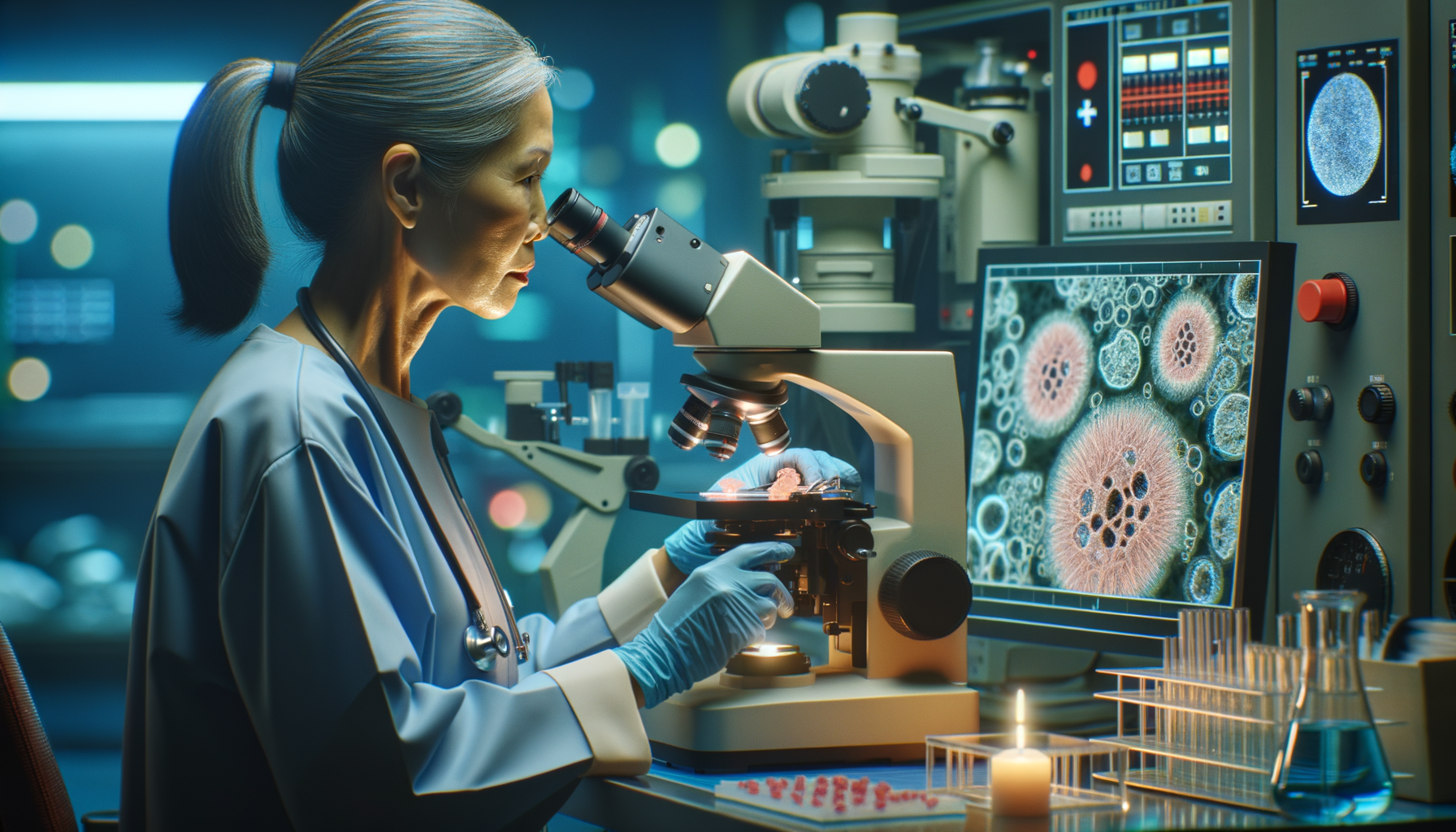Strange Diseases in the World: Exploring the Mysteries of Rare Medical Conditions
The Jumping Frenchmen of Maine
In the annals of medical history, few conditions are as peculiar and intriguing as the “Jumping Frenchmen of Maine.” This rare neuropsychiatric disorder, first observed in the late 19th century among French-Canadian lumberjacks in Maine, USA, is characterized by an exaggerated startle reflex, causing individuals to exhibit involuntary movements and vocalizations in response to unexpected stimuli.
According to a study published in the Journal of Nervous and Mental Disease, the Jumping Frenchmen exhibited a range of remarkable symptoms, including uncontrollable jumping or flailing movements, uttering involuntary phrases or obscenities, and even mimicking the actions or words of others. These behaviors were triggered by sudden stimuli, such as loud noises or abrupt movements, and seemed to defy the individuals’ conscious control.
While the exact cause of this condition remains elusive, researchers have proposed several theories to explain its origins. One hypothesis suggests a genetic predisposition, where certain individuals may have a heightened sensitivity to external stimuli, leading to an exaggerated startle response. Another theory proposes that environmental factors, such as exposure to certain toxins or infectious agents, may play a role in the development of the condition.
Interestingly, some researchers have also explored the possibility of a sociogenic illness, where the behavior spread through social contagion within the specific community of French-Canadian lumberjacks. This theory suggests that cultural norms and shared beliefs may have influenced the manifestation and perpetuation of the condition.
Regardless of its underlying causes, the Jumping Frenchmen of Maine highlight the complex interplay between neurology, psychiatry, and cultural factors, challenging our understanding of neurological responses and the influence of societal norms on human behavior.
Alice in Wonderland Syndrome: A Distorted Reality
Another fascinating condition that defies conventional understanding is the “Alice in Wonderland Syndrome” (AIWS), named after the famous novel by Lewis Carroll. This neurological disorder is characterized by distorted perceptions of size, shape, and time, creating a sense of altered reality for those affected.
Individuals with AIWS may experience a range of perceptual distortions, including metamorphopsia, where objects or people appear larger or smaller than they actually are. They may also experience macropsia, where they perceive things as being larger than their actual size, or micropsia, where objects appear smaller than their true dimensions. Additionally, distortions in the perception of time and sound can further contribute to the surreal experience of AIWS.
While the exact cause of AIWS is not fully understood, it is believed to be related to abnormal brain activity in the areas responsible for processing visual and auditory information. The condition has been linked to various underlying neurological conditions, such as migraines, epilepsy, and brain tumors, suggesting that disruptions in the brain’s normal functioning may play a role in the development of AIWS.
AIWS offers insights into the diverse ways the brain can function differently and the mechanisms underlying these conditions. It also highlights the importance of understanding the subjective experiences of patients and the impact these distortions can have on their daily lives. By studying AIWS, researchers hope to gain a deeper understanding of the complex processes involved in perception and cognition, potentially leading to improved diagnostic and therapeutic approaches.
Melioidosis: A Rare Bacterial Disease from an Aquarium
In a surprising case reported by the Centers for Disease Control and Prevention (CDC), a woman in Maryland contracted a rare bacterial disease called melioidosis from her home aquarium. Melioidosis is typically found in tropical and subtropical regions and is caused by the bacterium Burkholderia pseudomallei, which can be found in contaminated soil and water.
The woman, who had no travel history outside the United States, was the first known case of melioidosis linked to a home aquarium. The CDC investigation revealed that the aquarium’s water and soil were contaminated with the bacteria, likely introduced through imported aquatic plants or fish.
Melioidosis is a potentially serious illness that can cause a range of symptoms, including pneumonia, abscesses, and septic shock. In this case, the woman developed a cough and fever, prompting medical attention and eventual diagnosis of the rare disease.
This case is unusual because melioidosis is considered a “tropical disease” and is rarely seen in the United States, especially in individuals without a history of travel to endemic areas. It highlights the potential for rare diseases to spread through unexpected routes and the importance of vigilance in identifying and addressing such cases.
The CDC’s investigation and response to this case serve as a reminder of the crucial role public health agencies play in monitoring and controlling the spread of infectious diseases, even those considered rare or uncommon in certain regions. It also underscores the need for continued research and surveillance to better understand the transmission pathways and risk factors associated with emerging and re-emerging infectious diseases.
Cement in the Heart: A Remarkable Medical Case
In a remarkable medical case reported by the New England Journal of Medicine, a 24-year-old construction worker had a piece of cement lodged in his heart after a construction accident. The man fell from a height of approximately 10 feet, and a small piece of cement pierced his chest and became embedded in his heart.
Despite the life-threatening situation, the man survived thanks to prompt medical intervention and a successful surgical procedure to remove the foreign object. The case showcases the resilience of the human body and the incredible skills of medical professionals in dealing with unusual and critical situations.
The surgical team faced the daunting task of removing the cement fragment without causing further damage to the heart or surrounding structures. Through careful planning and precise execution, they were able to successfully extract the foreign object, allowing the patient to recover and regain his health.
This case not only highlights the importance of workplace safety and the potential for accidents to result in unexpected medical emergencies but also serves as a testament to the remarkable advancements in medical technology and surgical techniques. It demonstrates the ability of skilled medical professionals to navigate complex and high-risk situations, ultimately saving lives in the face of extraordinary circumstances.
Conclusion
The world of strange diseases is a fascinating and humbling realm, reminding us of the complexities and mysteries that still exist within the human body. From the Jumping Frenchmen of Maine to Alice in Wonderland Syndrome, these conditions challenge our understanding of neurology, psychiatry, and the intricate workings of the brain.
Cases like melioidosis contracted from a home aquarium and the remarkable instance of cement lodged in a heart serve as reminders of the unexpected ways diseases can spread and the resilience of the human body in the face of extraordinary circumstances.
These cases not only captivate our curiosity but also underscore the importance of continued research, vigilance, and a deep understanding of the diverse medical conditions that can affect human health. By exploring and studying these strange diseases, we can gain valuable insights into the intricate mechanisms of the body and pave the way for better prevention, diagnosis, and treatment strategies.
As we delve deeper into the mysteries of the human condition, we must approach these cases with empathy, respect, and a commitment to advancing our knowledge for the betterment of all. Through collaborative efforts among medical professionals, researchers, and public health organizations, we can continue to unravel the complexities of rare and unusual diseases, ultimately improving our ability to protect and promote human health on a global scale.
.
This article is generated by SafeComs AI, Automation Bot.





Leave a Reply